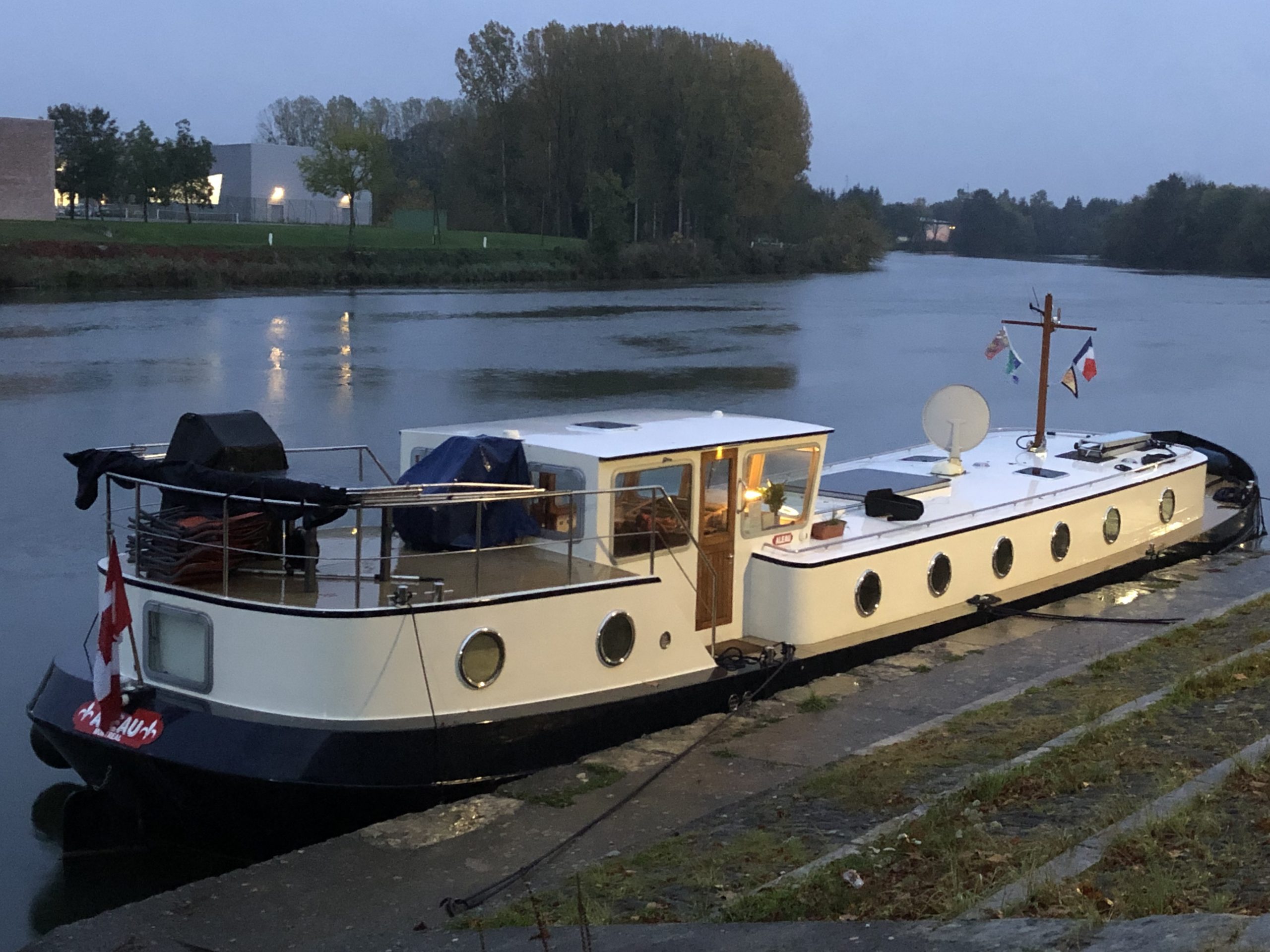This evening, we finally had a different view when we looked out of Aleau’s portholes. There are more than a few people who might say it was not the most scenic view, but for us, it was beautiful. It meant we were at long last back on the water.

It was more than a month ago that we were placed on a raft and raised out of the water.

During that time, work proceeded almost non-stop. It continued not just on Monday through Friday but on Saturday, as well. Even one Sunday morning, we found someone working beneath the hull.
Five-years worth of marine life had to be removed from the hull. Numerous scrapes, the accumulation of passing through hundreds of locks (often just centimetres wider than Aleau and sometimes during strong crosswinds) needed to disappear.
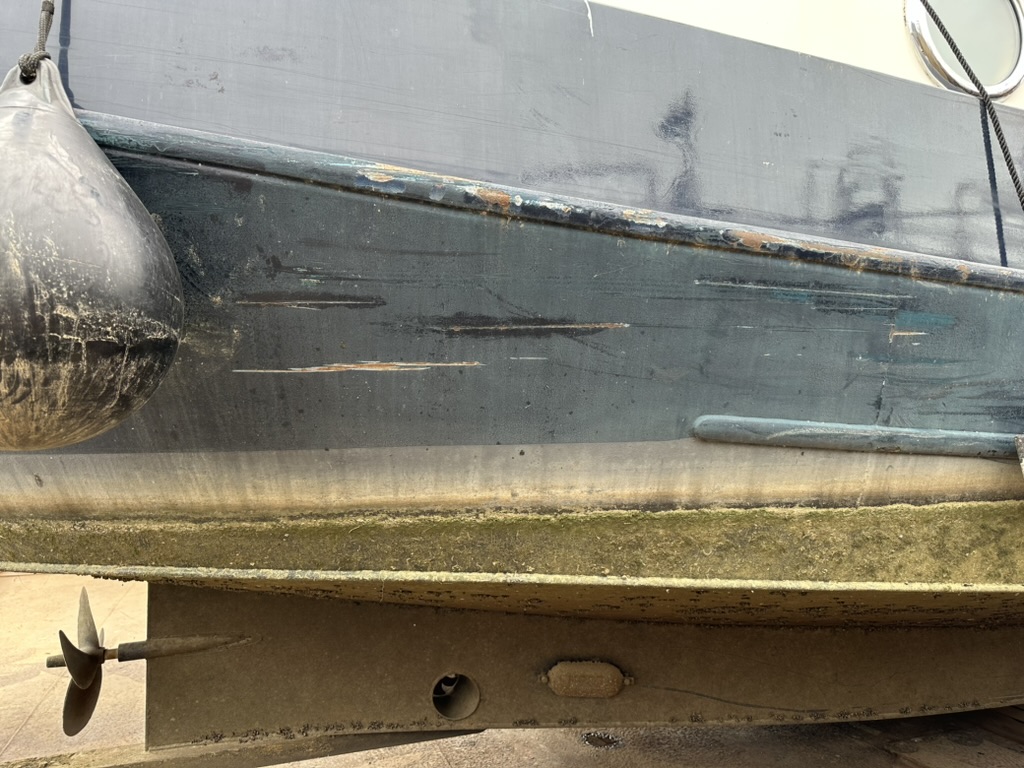


The hull received two coats of blacking and two coats of anti-fouling. The slits on the left are where water enters the hull to cool Aleau’s diesel engine. The disc to the right is the depth sounder. The hole above it is the exit for our black-water tank. In Paris, there is a hose and pump that allows us to empty the tank from above without waste emptying into the marina. In fact, it is against the law – with a hefty fine – if anything from Aleau gets into the marina water – and therefore, the Seine. Unfortunately, outside of Paris there are very few places where there are pump-out stations. Human waste is pumped directly into the rivers and canals. Hopefully, with increasing concern for the environment, more pump-out stations will be built.

A welder attached metal brackets that will hold large pieces of rubber – and we hope, reduce the number of scrapes we get while passing through locks.
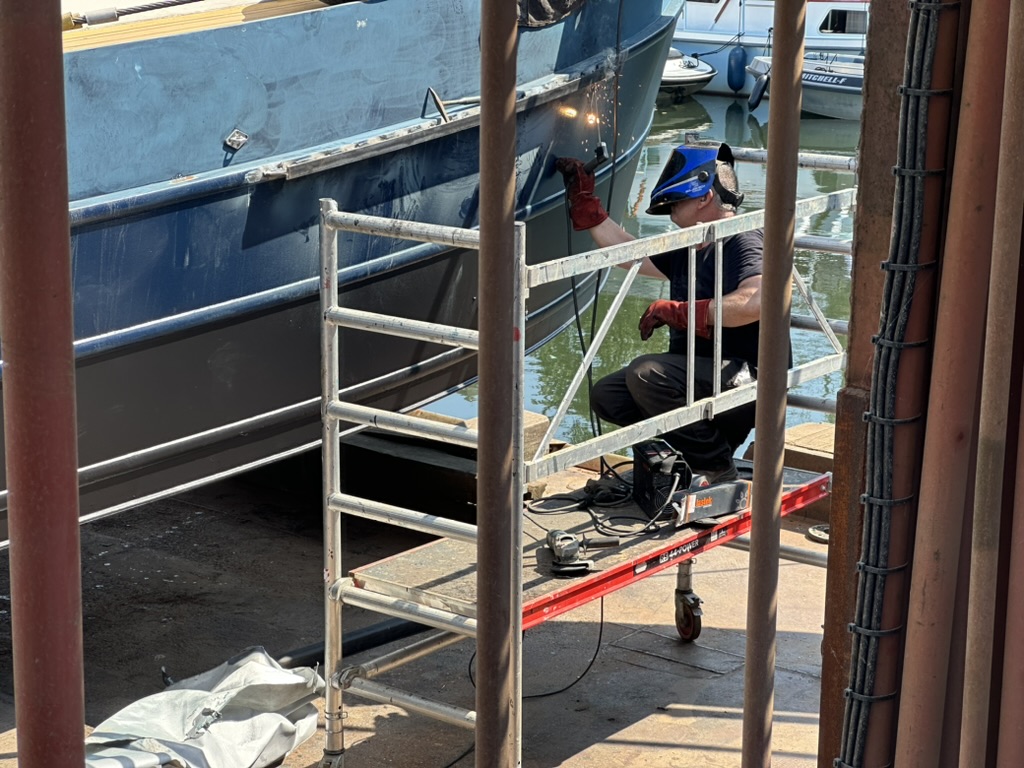
There were times when there were multiple sets of workers on and beneath Aleau. Each busy with a different task.
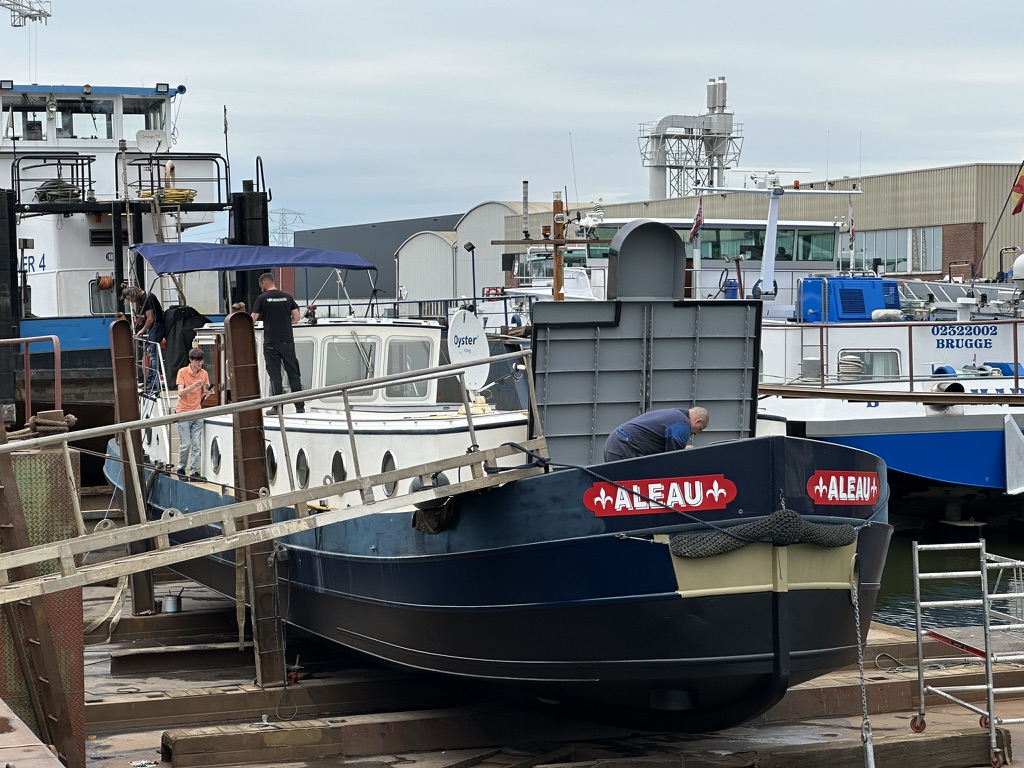
While all this work was going on – for more than a month – Jeannie and I were living onboard. Getting on and off Aleau meant walking a gangway that would suddenly rock to one side while crossing. It was a bit unsettling.
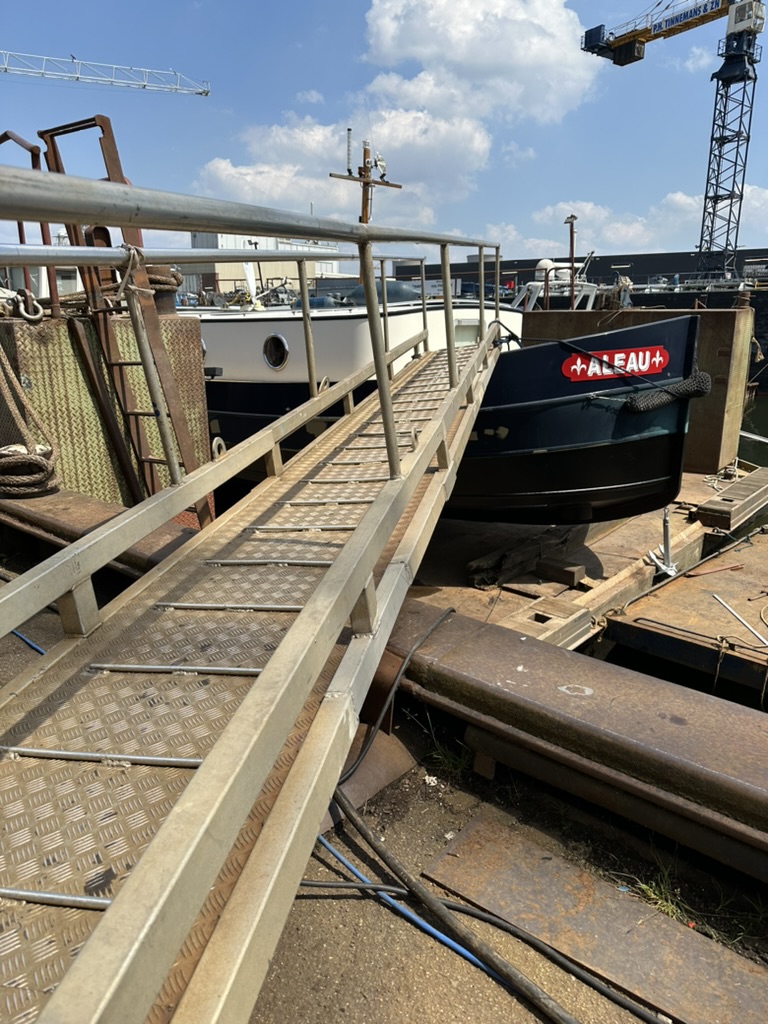
If I wanted to check on work underneath, I would climb down a narrow ladder tied against Aleau. It was a long way down – and I do not like heights.
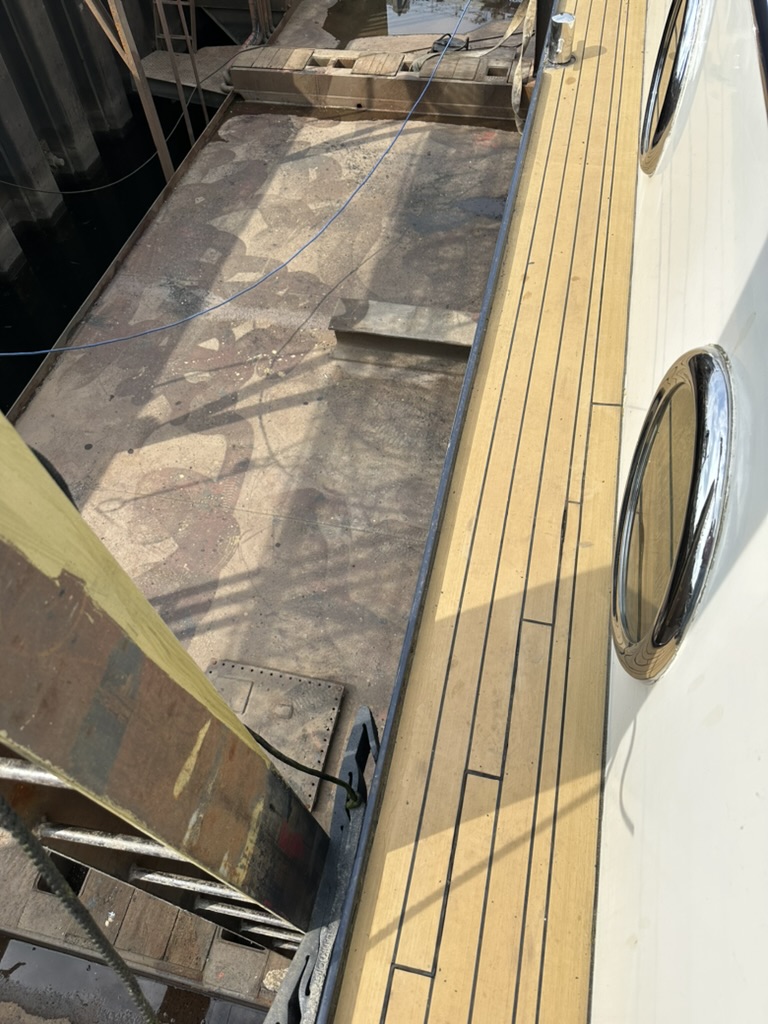
Work was being done above at the same time as it was below.

What thrilled us was to see five solar panels installed on the wheelhouse roof. Now, we just have to wait until the sun returns (We are told that, eventually, it will.) to see how much electricity they will give us.

Tired of our CCTV cameras being damaged as people climbed the stairs to the aft-deck, we had a metal bracket fabricated and installed above them. (A jerry-rigged plastic rain-shield I put up did a so-so job of protecting them from rain – but not passing humans.)


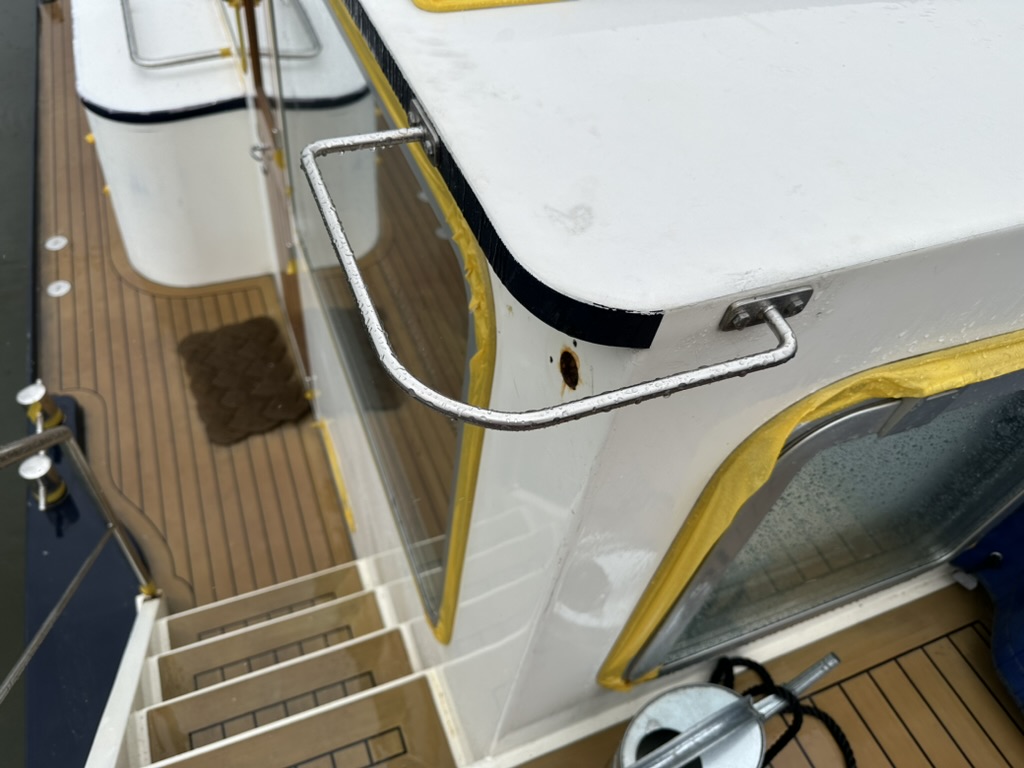
As work progressed outside, just as much was being done inside. A fancy Miele coffee-maker that never worked was replaced by an electric heater that will be really appreciated during cold winters.


In the living room, a window that had turned into an aquarium (minus the fish) had to be replaced.

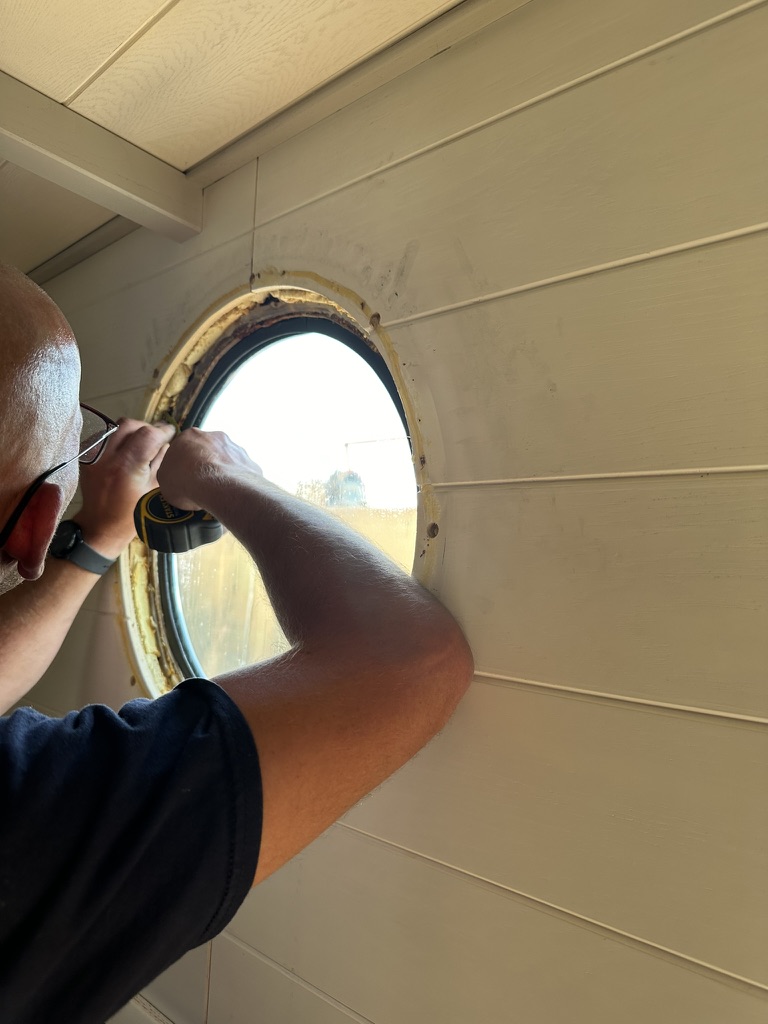
In the engine room, work on both the engine and our generator was proceeding. It was taking a long time – but we could see our list of work to be done was getting shorter.
When the sun was shining (a rare occurrence), we could admire the progress.

With Aleau still sitting on the raft, we turned around and watched Pete and Tess’ barge, La Belle Hèlène being hoisted out of the water.

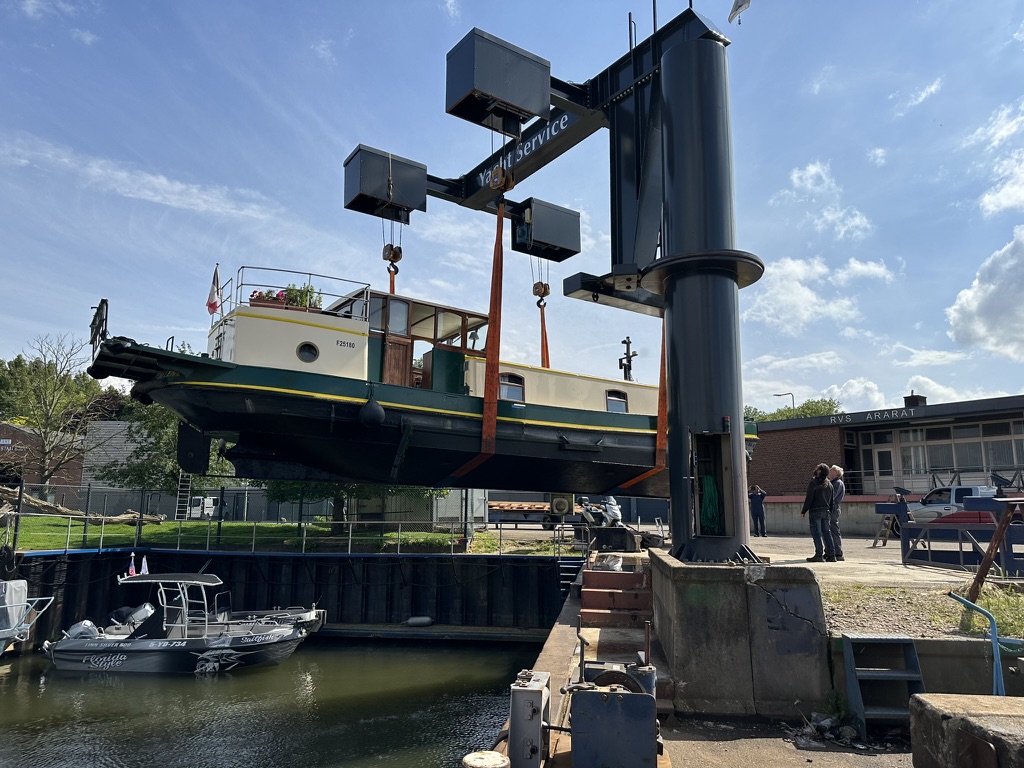
It was placed on a motorized dolly and driven (with a joystick) to where its hull will be cleaned and painted.
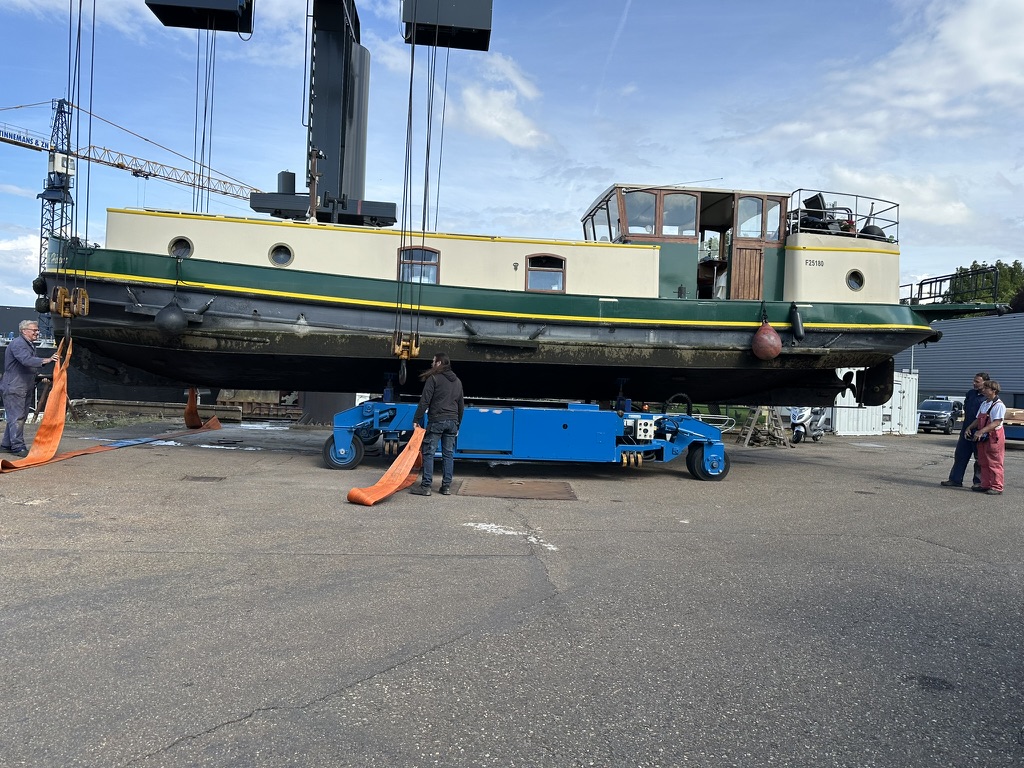
Doing it that way makes work underneath easier. Unfortunately, Aleau is too heavy to be lifted out. But the raft provided access to all the critical components – such as our propeller.
It looked a bit worse for wear. Touching bottom on a few canals had damaged the edges.


It was sent out to be repaired. When it came back, it looked better suited to hang in an art gallery than beneath the water at the stern of a barge.
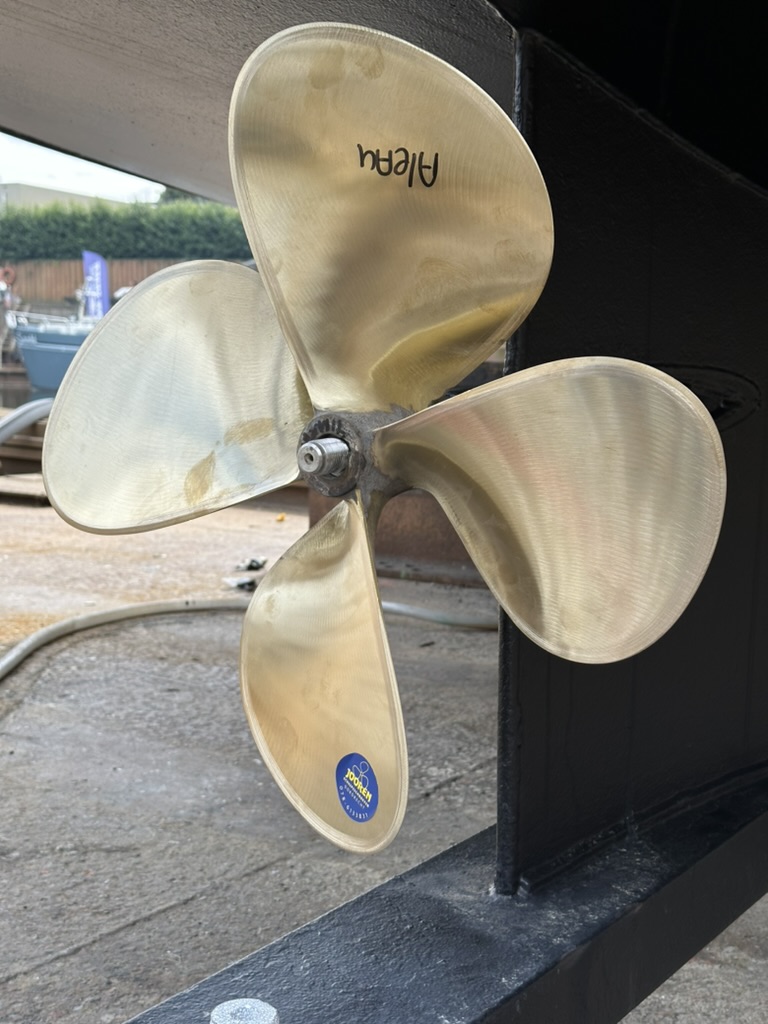
The installation of the propeller was the last thing that needed to be done with Aleau out of the water. It was time to sink the raft and put Aleau back in her element.
First, the gangway was lifted out of the way.
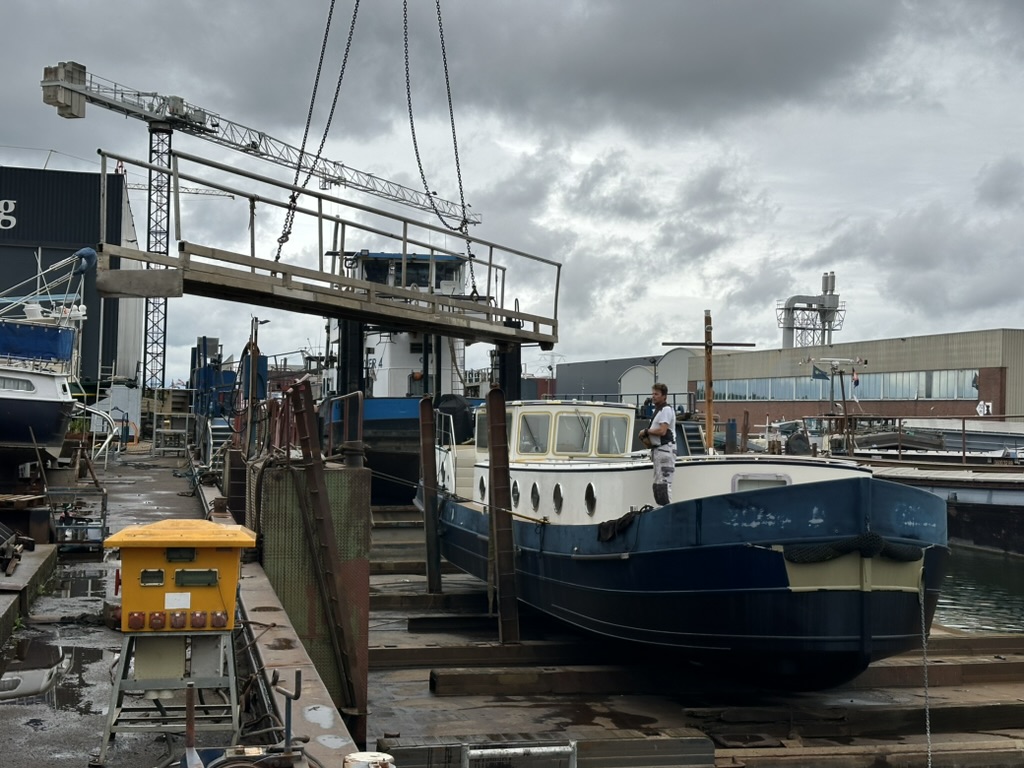
Then Louis, in white on the left, opened the valves to let water into the raft.

Then, with the controls hanging from his neck, he used the giant overhead crane to ferry himself across to Aleau.

With Jeannie standing in the pouring rain and ready to lend assistance, Louis used the crane to slowly move Aleau off the raft.

The wind made it touch-and-go. Jeannie held a fender in place in case it was more touch than go.
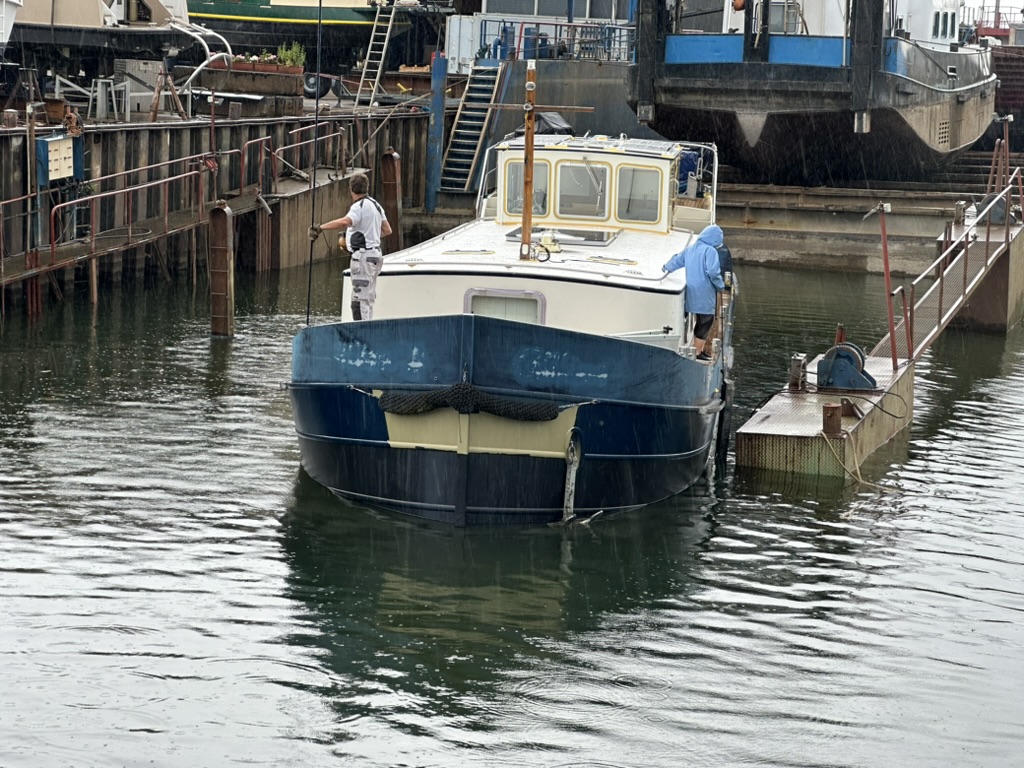
Seconds later, help arrived at the bow – with Jeannie at the stern and fender in hand, making sure Aleau didn’t rub against the raft.
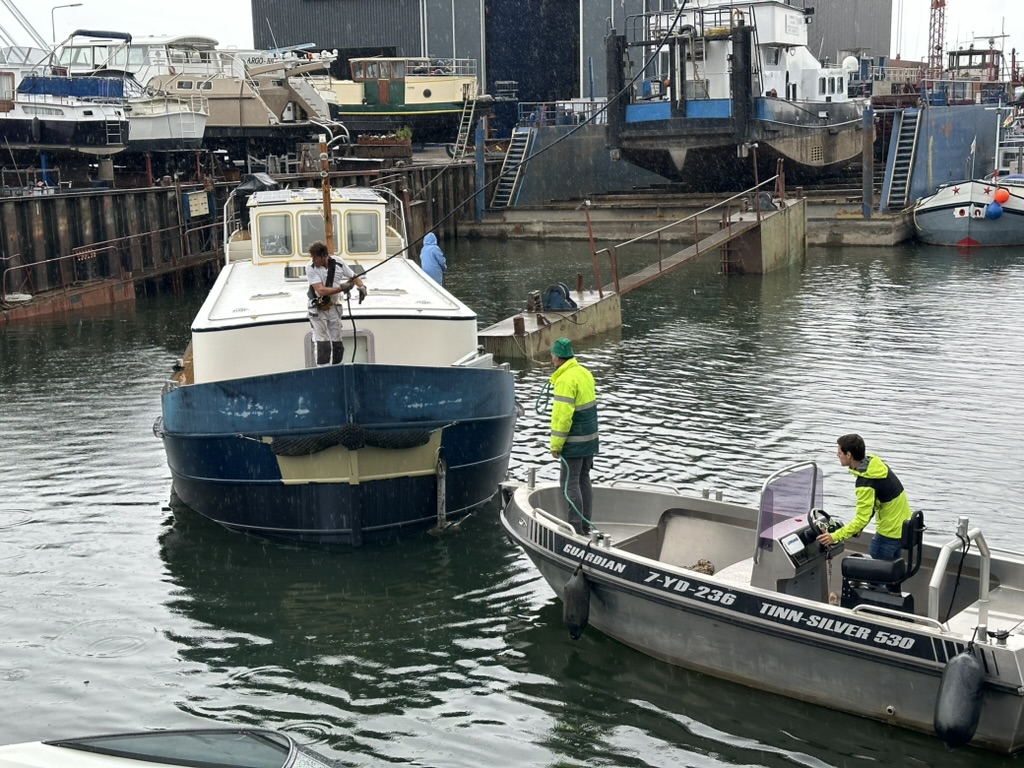
Aleau was moved to where the photo at the top of the page was taken. Still in the shipyard but back in the water. Jeannie and I both breathed a sigh of relief. Back where we belong. Within hours, another barge had taken our spot on the raft. Work here never stops.

And it won’t stop on Aleau. There’s still a long list of things to be done – work that can be done while Aleau is in the water. Unfortunately, it can’t all be done before the shipyard closes for one month beginning on July 19. When it does, we’ll leave and do a bit of cruising through the Netherlands. We are booked to return to Tinnemans on September 9. We don’t know how long the remaining work will take – but it’s highly unlikely we’ll be back in Paris by October 1 as we had planned. Once again, “barging” and “planning” are two words that cannot be used together.
